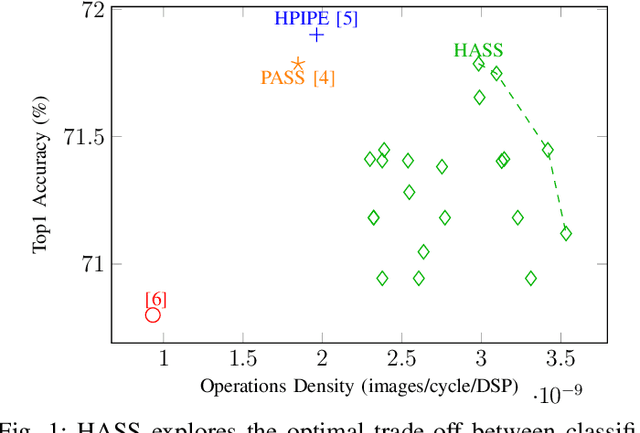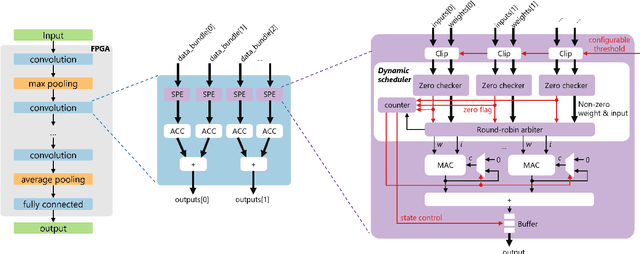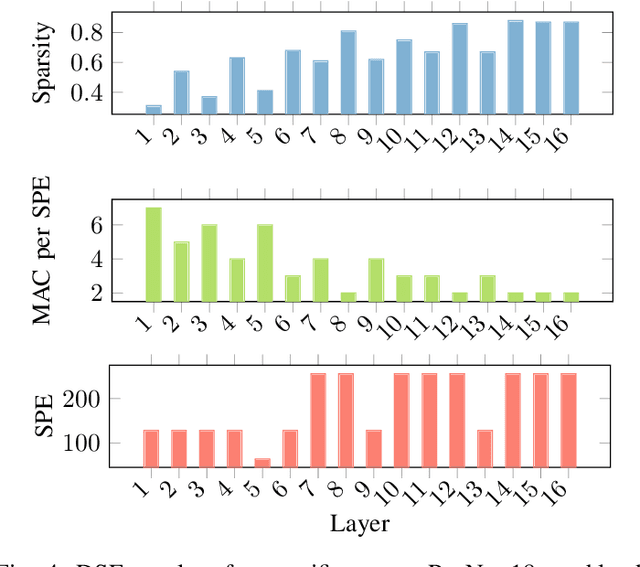Junyi Wu
EMO-X: Efficient Multi-Person Pose and Shape Estimation in One-Stage
Apr 11, 2025Abstract:Expressive Human Pose and Shape Estimation (EHPS) aims to jointly estimate human pose, hand gesture, and facial expression from monocular images. Existing methods predominantly rely on Transformer-based architectures, which suffer from quadratic complexity in self-attention, leading to substantial computational overhead, especially in multi-person scenarios. Recently, Mamba has emerged as a promising alternative to Transformers due to its efficient global modeling capability. However, it remains limited in capturing fine-grained local dependencies, which are essential for precise EHPS. To address these issues, we propose EMO-X, the Efficient Multi-person One-stage model for multi-person EHPS. Specifically, we explore a Scan-based Global-Local Decoder (SGLD) that integrates global context with skeleton-aware local features to iteratively enhance human tokens. Our EMO-X leverages the superior global modeling capability of Mamba and designs a local bidirectional scan mechanism for skeleton-aware local refinement. Comprehensive experiments demonstrate that EMO-X strikes an excellent balance between efficiency and accuracy. Notably, it achieves a significant reduction in computational complexity, requiring 69.8% less inference time compared to state-of-the-art (SOTA) methods, while outperforming most of them in accuracy.
SpecEE: Accelerating Large Language Model Inference with Speculative Early Exiting
Apr 11, 2025Abstract:Early exiting has recently emerged as a promising technique for accelerating large language models (LLMs) by effectively reducing the hardware computation and memory access. In this paper, we present SpecEE, a fast LLM inference engine with speculative early exiting. (1) At the algorithm level, we propose the speculation-based lightweight predictor design by exploiting the probabilistic correlation between the speculative tokens and the correct results and high parallelism of GPUs. (2) At the system level, we point out that not all layers need a predictor and design the two-level heuristic predictor scheduling engine based on skewed distribution and contextual similarity. (3) At the mapping level, we point out that different decoding methods share the same essential characteristics, and propose the context-aware merged mapping for predictor with efficient GPU implementations to support speculative decoding, and form a framework for various existing orthogonal acceleration techniques (e.g., quantization and sparse activation) on cloud and personal computer (PC) scenarios, successfully pushing the Pareto frontier of accuracy and speedup. It is worth noting that SpecEE can be applied to any LLM by negligible training overhead in advance without affecting the model original parameters. Extensive experiments show that SpecEE achieves 2.25x and 2.43x speedup with Llama2-7B on cloud and PC scenarios respectively.
X-Field: A Physically Grounded Representation for 3D X-ray Reconstruction
Mar 11, 2025Abstract:X-ray imaging is indispensable in medical diagnostics, yet its use is tightly regulated due to potential health risks. To mitigate radiation exposure, recent research focuses on generating novel views from sparse inputs and reconstructing Computed Tomography (CT) volumes, borrowing representations from the 3D reconstruction area. However, these representations originally target visible light imaging that emphasizes reflection and scattering effects, while neglecting penetration and attenuation properties of X-ray imaging. In this paper, we introduce X-Field, the first 3D representation specifically designed for X-ray imaging, rooted in the energy absorption rates across different materials. To accurately model diverse materials within internal structures, we employ 3D ellipsoids with distinct attenuation coefficients. To estimate each material's energy absorption of X-rays, we devise an efficient path partitioning algorithm accounting for complex ellipsoid intersections. We further propose hybrid progressive initialization to refine the geometric accuracy of X-Filed and incorporate material-based optimization to enhance model fitting along material boundaries. Experiments show that X-Field achieves superior visual fidelity on both real-world human organ and synthetic object datasets, outperforming state-of-the-art methods in X-ray Novel View Synthesis and CT Reconstruction.
QuantCache: Adaptive Importance-Guided Quantization with Hierarchical Latent and Layer Caching for Video Generation
Mar 09, 2025Abstract:Recently, Diffusion Transformers (DiTs) have emerged as a dominant architecture in video generation, surpassing U-Net-based models in terms of performance. However, the enhanced capabilities of DiTs come with significant drawbacks, including increased computational and memory costs, which hinder their deployment on resource-constrained devices. Current acceleration techniques, such as quantization and cache mechanism, offer limited speedup and are often applied in isolation, failing to fully address the complexities of DiT architectures. In this paper, we propose QuantCache, a novel training-free inference acceleration framework that jointly optimizes hierarchical latent caching, adaptive importance-guided quantization, and structural redundancy-aware pruning. QuantCache achieves an end-to-end latency speedup of 6.72$\times$ on Open-Sora with minimal loss in generation quality. Extensive experiments across multiple video generation benchmarks demonstrate the effectiveness of our method, setting a new standard for efficient DiT inference. The code and models will be available at https://github.com/JunyiWuCode/QuantCache.
Dataset Quantization with Active Learning based Adaptive Sampling
Jul 09, 2024Abstract:Deep learning has made remarkable progress recently, largely due to the availability of large, well-labeled datasets. However, the training on such datasets elevates costs and computational demands. To address this, various techniques like coreset selection, dataset distillation, and dataset quantization have been explored in the literature. Unlike traditional techniques that depend on uniform sample distributions across different classes, our research demonstrates that maintaining performance is feasible even with uneven distributions. We find that for certain classes, the variation in sample quantity has a minimal impact on performance. Inspired by this observation, an intuitive idea is to reduce the number of samples for stable classes and increase the number of samples for sensitive classes to achieve a better performance with the same sampling ratio. Then the question arises: how can we adaptively select samples from a dataset to achieve optimal performance? In this paper, we propose a novel active learning based adaptive sampling strategy, Dataset Quantization with Active Learning based Adaptive Sampling (DQAS), to optimize the sample selection. In addition, we introduce a novel pipeline for dataset quantization, utilizing feature space from the final stage of dataset quantization to generate more precise dataset bins. Our comprehensive evaluations on the multiple datasets show that our approach outperforms the state-of-the-art dataset compression methods.
Visual Grounding with Attention-Driven Constraint Balancing
Jul 03, 2024Abstract:Unlike Object Detection, Visual Grounding task necessitates the detection of an object described by complex free-form language. To simultaneously model such complex semantic and visual representations, recent state-of-the-art studies adopt transformer-based models to fuse features from both modalities, further introducing various modules that modulate visual features to align with the language expressions and eliminate the irrelevant redundant information. However, their loss function, still adopting common Object Detection losses, solely governs the bounding box regression output, failing to fully optimize for the above objectives. To tackle this problem, in this paper, we first analyze the attention mechanisms of transformer-based models. Building upon this, we further propose a novel framework named Attention-Driven Constraint Balancing (AttBalance) to optimize the behavior of visual features within language-relevant regions. Extensive experimental results show that our method brings impressive improvements. Specifically, we achieve constant improvements over five different models evaluated on four different benchmarks. Moreover, we attain a new state-of-the-art performance by integrating our method into QRNet.
HASS: Hardware-Aware Sparsity Search for Dataflow DNN Accelerator
Jun 05, 2024



Abstract:Deep Neural Networks (DNNs) excel in learning hierarchical representations from raw data, such as images, audio, and text. To compute these DNN models with high performance and energy efficiency, these models are usually deployed onto customized hardware accelerators. Among various accelerator designs, dataflow architecture has shown promising performance due to its layer-pipelined structure and its scalability in data parallelism. Exploiting weights and activations sparsity can further enhance memory storage and computation efficiency. However, existing approaches focus on exploiting sparsity in non-dataflow accelerators, which cannot be applied onto dataflow accelerators because of the large hardware design space introduced. As such, this could miss opportunities to find an optimal combination of sparsity features and hardware designs. In this paper, we propose a novel approach to exploit unstructured weights and activations sparsity for dataflow accelerators, using software and hardware co-optimization. We propose a Hardware-Aware Sparsity Search (HASS) to systematically determine an efficient sparsity solution for dataflow accelerators. Over a set of models, we achieve an efficiency improvement ranging from 1.3$\times$ to 4.2$\times$ compared to existing sparse designs, which are either non-dataflow or non-hardware-aware. Particularly, the throughput of MobileNetV3 can be optimized to 4895 images per second. HASS is open-source: \url{https://github.com/Yu-Zhewen/HASS}
PTQ4DiT: Post-training Quantization for Diffusion Transformers
May 25, 2024Abstract:The recent introduction of Diffusion Transformers (DiTs) has demonstrated exceptional capabilities in image generation by using a different backbone architecture, departing from traditional U-Nets and embracing the scalable nature of transformers. Despite their advanced capabilities, the wide deployment of DiTs, particularly for real-time applications, is currently hampered by considerable computational demands at the inference stage. Post-training Quantization (PTQ) has emerged as a fast and data-efficient solution that can significantly reduce computation and memory footprint by using low-bit weights and activations. However, its applicability to DiTs has not yet been explored and faces non-trivial difficulties due to the unique design of DiTs. In this paper, we propose PTQ4DiT, a specifically designed PTQ method for DiTs. We discover two primary quantization challenges inherent in DiTs, notably the presence of salient channels with extreme magnitudes and the temporal variability in distributions of salient activation over multiple timesteps. To tackle these challenges, we propose Channel-wise Salience Balancing (CSB) and Spearmen's $\rho$-guided Salience Calibration (SSC). CSB leverages the complementarity property of channel magnitudes to redistribute the extremes, alleviating quantization errors for both activations and weights. SSC extends this approach by dynamically adjusting the balanced salience to capture the temporal variations in activation. Additionally, to eliminate extra computational costs caused by PTQ4DiT during inference, we design an offline re-parameterization strategy for DiTs. Experiments demonstrate that our PTQ4DiT successfully quantizes DiTs to 8-bit precision (W8A8) while preserving comparable generation ability and further enables effective quantization to 4-bit weight precision (W4A8) for the first time.
On the Faithfulness of Vision Transformer Explanations
Apr 01, 2024Abstract:To interpret Vision Transformers, post-hoc explanations assign salience scores to input pixels, providing human-understandable heatmaps. However, whether these interpretations reflect true rationales behind the model's output is still underexplored. To address this gap, we study the faithfulness criterion of explanations: the assigned salience scores should represent the influence of the corresponding input pixels on the model's predictions. To evaluate faithfulness, we introduce Salience-guided Faithfulness Coefficient (SaCo), a novel evaluation metric leveraging essential information of salience distribution. Specifically, we conduct pair-wise comparisons among distinct pixel groups and then aggregate the differences in their salience scores, resulting in a coefficient that indicates the explanation's degree of faithfulness. Our explorations reveal that current metrics struggle to differentiate between advanced explanation methods and Random Attribution, thereby failing to capture the faithfulness property. In contrast, our proposed SaCo offers a reliable faithfulness measurement, establishing a robust metric for interpretations. Furthermore, our SaCo demonstrates that the use of gradient and multi-layer aggregation can markedly enhance the faithfulness of attention-based explanation, shedding light on potential paths for advancing Vision Transformer explainability.
Token Transformation Matters: Towards Faithful Post-hoc Explanation for Vision Transformer
Mar 21, 2024



Abstract:While Transformers have rapidly gained popularity in various computer vision applications, post-hoc explanations of their internal mechanisms remain largely unexplored. Vision Transformers extract visual information by representing image regions as transformed tokens and integrating them via attention weights. However, existing post-hoc explanation methods merely consider these attention weights, neglecting crucial information from the transformed tokens, which fails to accurately illustrate the rationales behind the models' predictions. To incorporate the influence of token transformation into interpretation, we propose TokenTM, a novel post-hoc explanation method that utilizes our introduced measurement of token transformation effects. Specifically, we quantify token transformation effects by measuring changes in token lengths and correlations in their directions pre- and post-transformation. Moreover, we develop initialization and aggregation rules to integrate both attention weights and token transformation effects across all layers, capturing holistic token contributions throughout the model. Experimental results on segmentation and perturbation tests demonstrate the superiority of our proposed TokenTM compared to state-of-the-art Vision Transformer explanation methods.
 Add to Chrome
Add to Chrome Add to Firefox
Add to Firefox Add to Edge
Add to Edge